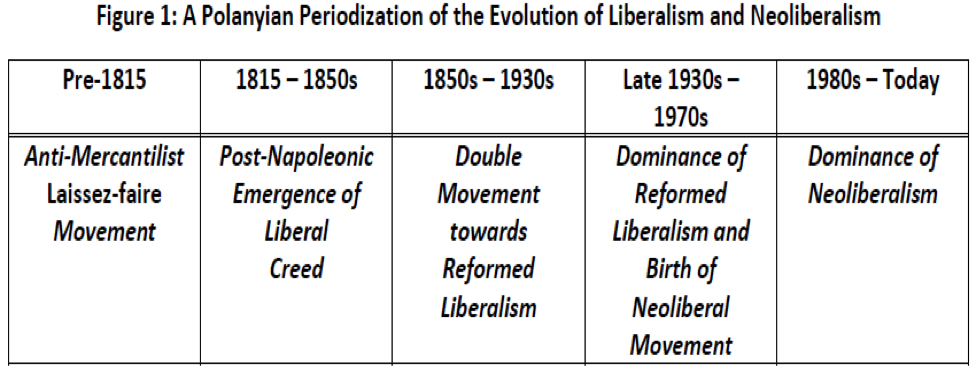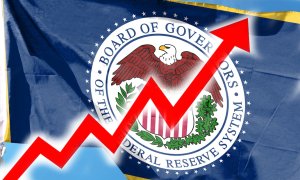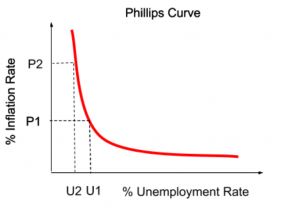Laissez faire was planned, explained Karl Polanyi in The Great Transformation: The origins of the market system go back to the intentional project of institutional transformation initiated in England in the 19th century, establishing a free labor market, free trade and the gold standard. Institutions such as the unions, the industrial cartels and the Welfare State instead emerged subsequently as spontaneous counter-reactions to laissez faire. Kari Polanyi Levitt and Mario Seccareccia show, with a new periodization, how this dialectic interaction, or ‘double movement’ can still guide the understanding of today’s Neoliberalism.
“The Political Movement that Dared not Speak its Own Name”: Thoughts on Neoliberalism from a Polanyian Perspective
by Kari Polanyi Levitt and Mario Seccareccia*
*Kari Polanyi Levitt is Professor Emerita of Economics at McGill University, Montreal, Quebec, Canada; and Mario Seccareccia is Professor of Economics at the University of Ottawa, Ottawa, Ontario, Canada.
Laissez faire was planned, explained Karl Polanyi in The Great Transformation: The origins of the market system go back to the intentional project of institutional transformation initiated in England in the 19th century, establishing a free labor market, free trade and the gold standard. Institutions such as the unions, the industrial cartels and the Welfare State instead emerged subsequently as spontaneous counter-reactions to laissez faire. Kari Polanyi Levitt and Mario Seccareccia show, with a new periodization, how this dialectic interaction, or ‘double movement’ can still guide the understanding of today’s Neoliberalism.
Philip Mirowski has produced some truly exceptional works on the historical roots and intellectual history of what is described as the Neoliberal Thought Collective (NTC). These works have been rightly celebrated for deepening our understanding of the continued popularity and dominance of neoliberal policy ideas in the second decade of the twenty-first century (see, for, instance, Mirowski [2013] and Mirowski and Plehwe [2009]).
Neoliberalism, just like some other overworked buzzwords du jour (to use his expression) such as globalization and financialization, has slipped into the common lexicon, especially of political economists, over the last few decades. This expression is normally connected with the rise of the visible hand of the so-called “pro-market” minimalist state in seeking to remove all vestiges of the postwar Keynesian welfare state that had resulted from social struggles rejecting the old economic liberalism of the nineteenth century. For this reason, it cannot be associated merely with the dominance of neoclassical economic ideas and methodology. As he correctly depicts in Figure 3 of his working paper (Mirowski 2014, p. 10), those are quite distinct in nature. An example of these divisions are the differences and tensions within the large NTC over such matters as how economic agents behave in processing information: the neo-Austrians reject outright models of perfect knowledge and point to the market as the only correct source of information, while the Chicago rational expectations tribe starts with the presupposition of quasi-perfect knowledge. Because of differing presuppositions, there ensue differences in how, for instance, the neoliberals view the state as an instrument to protect the “market” from the demands of the “people”, while the neoclassicals see it as an exogenous entity potentially generating market “imperfections”. Yet, as Mirowski (2014) rightly points out, there remains among most economists much skepticism as to the existence of neoliberalism as an intellectual movement itself. This is so despite the fact that neoliberalism has slowly achieved such a global political influence in government policy circles since its beginnings during the interwar era of the last century and in the immediate post-WWII years with the founding of the Mont Pèlerin Society in 1947.
We are in complete agreement with Philip Mirowski (2014) on the existence of an organized Neoliberal Political Project (NPP) — whose presence he tries to detect and measure by using various analytical tools of research. For instance, he provides an empirical review of the number of books and articles referring to neoliberalism, particularly since the 1980s, and he studies the proliferation of neoliberal think-tanks and other such lobby groups, often masquerading as research institutes that can hijack government policies at the local and national levels and end up almost as in camera advisors to elected representatives. A very good example of this is right here in Canada over the last decade. In this country, there has been much suspicion about the relationship between the previous Conservative government that was defeated recently in the October 2015 election and such neoliberal think-tanks as the Vancouver-based Fraser Institute, and lobby groups such as the Toronto-based National Citizens Coalition. The latter had actually once been headed by none other than our former Canadian Prime Minister, Stephen Harper, who is himself a political ideologue associated with the broad NPP.
However, this kind of capture of the state is hardly new. A similar takeover is discussed by Karl Polanyi in The Great Transformation, in reference to the emergence and development of what he dubbed the liberal creed in Ricardian and post-Ricardian England of the nineteenth century. His historical reconstruction focused precisely on the political strategies that were deployed by groups adhering to this creed to capture the state and redefine its role. Indeed, it is surprising that Karl Polanyi is not mentioned or cited once in Mirowski (2014).
This avoidance of Polanyi is somewhat surprising, since he had been the most solid opponent of many of the early twentieth-century neoliberal writers that Mirowski mentions. It was the case particularly with Ludwig von Mises already during the 1920s and early 1930s in Vienna, that is, much before the Keynes-Hayek debates that ensued in the late 1930s. But he also engaged debates with other liberal/neoliberal writers and eventual members of the Mont Pèlerin Society, such as Walter Lippmann (Polanyi 1944, p. 148). Indeed, while they did not actually know each other personally, Friedrich von Hayek and Karl Polanyi followed parallel paths from the two diametrically-opposed intellectual circles emerging in the Red Vienna of the 1920s, with each of them leaving for Britain in the early 1930s and then eventually to the United States (see, for more details, Polanyi Levitt 2012-13; 2013).
The Importance of Karl Polanyi’s Analysis to Understanding Current Neoliberalism
For Karl Polanyi, the liberal creed was the set of organizing principles that guided the nineteenth-century movement after the Great Reform Act of 1832, that had represented the political defeat of the British aristocracy by the then rising industrial class or bourgeoisie. Its purpose was to design and establish a self-regulating market system that would include the creation of markets for fictitious commodities, namely pseudo-markets for labor, land and money.
Until then, the principle of laissez-faire, as it had been embraced, for instance, by eighteenth-century French Physiocratic writers, had a much more limited focus. The goal of these early laissez-faire opponents of mercantilism was narrowly to free commodity markets from the yoke of mercantilist regulatory structures, especially as the latter impacted on agriculture. The nineteenth-century liberal creed was, instead, an all-encompassing principle for redesigning society as a ubiquitous and “self-regulating” market system. This wider social project required a threefold institutional transformation, consisting of separate acts of policy that had long been debated and planned by its proponents. The first of these was to establish “free labor”, towards whom an employer had no other obligation than to pay a market wage. This necessitated the creation of a capitalistic/competitive labor market by, for instance, abolishing outdoor poor relief, such as those associated with the Speenhamland system in England, thereby largely dis-embedding the labor market from its larger societal base. The second was free trade of commodities by imposing and extending the rules of a “de-regulated” goods market on a world scale. Under Pax Britannica, free trade policy entailed a precise hegemonic power relation with Britain importing from cheap sources of raw materials while, in return, selling more processed manufactured goods both domestically and internationally. David Ricardo had envisaged this structure of “free trade” at the end of the Napoleonic wars in 1815 in his critique of the Corn Laws, so as to sustain industrial rates of profit and forestall what he believed to be their inevitable fall. Thirdly, there was the establishment of the gold standard in order to remove discretionary monetary intervention as had existed previously during the Napoleonic wars and to impose a supposedly automatic (non-discretionary) monetary order, which, among other things, relied especially on a key power relation between Britain and its fledgling colonies (see de Cecco 1984).
In the British context, these foundational changes took place within a decade or so of the Great Reform act with, respectively, the adoption of the Poor Law Amendment Act of 1834, the repeal of the Corn Laws in 1846 and, in 1844, Sir Robert Peel’s Bank Charter Act, which established the Bank of England as a central bank. While the first largely eliminated the previous Poor Laws that allowed local parishes to distribute the relief to the indigent, and while the repeal of the corn law sacrificed domestic agriculture, making the country dependent on cheap imports, the purpose of the Bank Charter Act was to make capitalist enterprises and the haute finance believe that whatever they received in net revenues was as “real” as its equivalent in solid gold and to insure complete convertibility without monetary “debasement.” Karl Polanyi insisted that, in order for the so-called self-regulated market system to be established, those three conditions needed to be secured through political action, whose enactment served to “dis-embed” or institutionally to separate the “self-regulating market” from its broader social sphere.
Polanyi argued that, before 1832, changes were introduced by legislated actions of parliament dominated by the landed aristocracy. Changes usually took decades to unwind and be effective. Instead, many of the legislative changes of the following decade were introduced abruptly and, like in the case of the Poor Law, brutally. From that point onwards, further action required simply an administrative act. The buildup and enhancement of the administrative capacity of the state therefore aimed at introducing and preserving the emerging liberal order. In that connection, Polanyi cited Jeremy Bentham, who was a staunch believer in the efficiency of the administrative apparatus of the government, as illustrated by his famous inspection house project, the Panopticon, for the efficient supervision of penitentiaries, industrial establishments and schools (Polanyi 1944, p. 146). Centralized state bureaucracy became a decisive means of implementation and management of the changes to the Poor Laws; that is, to echo Michel Foucault, to establish and maintain the social order.
This had little to do with the laissez-faire demands of the anti-mercantilist critics of the previous era. Nor was the new order the outcome of some spontaneous developments. Instead, the new institutional structure of the so-called “self-regulating market” was itself the result of the concerted actions of the state to ensure compliance under the terms stipulated by the new order. In that sense, it was hardly a self-regulating system since, from the very beginning, it needed to be established and maintained by a strong bureaucracy and other elements of the state apparatus to enforce compliance. Indeed, as Polanyi affirmed, “laissez faire was planned” (Polanyi 1944, p. 147).
But what Polanyi also taught us is that if the market order was not natural, the reactions of the society were. A counter movement to the imposed laissez faire arose spontaneously from a great variety of sources. Those included struggles of the factory workers, that established their right to organize in trade unions, business claims for the “right” to establish cartels to protect themselves from cut-throat competition, states’ prerogative to shield their “infant industries” through tariff protection, and so on. These dialectic interactions generated a double movement that ultimately resolved into democratic reforms of the state, with the liberal institutions progressively sided by new structures, such as trade unions and mass socialist parties both on the European continent and, to a lesser extent, on the North American continent.
Following WWI and the Russian Revolution, the post-WWI struggles led to intellectual debates such as, for instance, Polanyi’s encounter with Ludwig von Mises, which occurred as early as 1922 in Vienna. In this latter case, the debate first arose over issues relating to the socialist municipal administration, with Mises praising for a return to the liberal era of the nineteenth-century belle époque. Interestingly, as Polanyi (1944) points out, the term “collectivism” had already been coined by such late nineteenth-century authors as Albert Dicey (1919), as a way to discredit the social responses to the liberal model. Following Dicey’s attack, Ludwig von Mises and his protégé, Friederich von Hayek, began to promote a startling image of the so called “collectivist state,” that supposedly stood in stark contrast to the principles of liberty typical of the liberal creed. It was from these repeated attacks on the Polanyian double movement, or what Mises and Hayek repeatedly described as the “state collectivist” movement, that the newly-emerging neoliberal creed was born.
The Neoliberal Era: What are the Differences?
At the core, the vocabulary of the neoliberal creed was not very different from the nineteenth century liberal rhetoric, preaching the virtues of competition and so forth. We could say that the former intellectual baggage served as source and inspiration for the latter (see Henry 2010), yet there was a substantive difference. In fact, by the late nineteenth and early twentieth century, the liberal state had undergone considerable reforms. For instance, by the 1920s and 1930s, the British liberal movement came to be associated with important figures such as John Maynard Keynes and William Beveridge, who sought to save capitalism from its own destructive tendencies by means of what, in the early post-WWII era, came to be called the Keynesian welfare state. One has only to recall the title and content of Lord Beveridge’s famous 1944 book, Full Employment in a Free Society, to recognize the transformation that liberalism had undergone. Hence, as a result of the Polanyian double movement, liberalism had undergone a metamorphosis that was far more compatible with the current usage of the term in the United States and Canada, which reflects the welfare state policies of the New Deal era.
Neoliberalism, instead, developed already in the 1930s in opposition to this newly-reformed twentieth-century liberalist “synthesis,” or what some may also describe as the Galbraithian countervailing powers (see Galbraith 1952), which had arisen out of the Polanyi’s double movement. Once again, the goal of the neoliberal movement was to capture the state and impose a new order, while pretending to hark back to the ideals of nineteenth-century liberalism. As recognized by Polanyi, neoliberals like Walter Lippmann neither believed in laissez faire nor in democratic governance. Actually, as Hayek explained in his book The Constitution of Liberty, they were aware that once the new neoliberal order were established, it would have to be protected against political interference of the mass democracy; that is, from the inevitable political pressures resulting from Polanyi’s double movement.
But what are the precise pillars of the neoliberal creed that emerged since the late 1930s and promoted by the members of the Mont Pèlerin Society and the allied organizations that flourished especially since the 1970s? Interestingly, also the neoliberal movement came to follow a three-pronged strategy somewhat analogous, in its rationale, to the earlier liberalism: First, their policy perspective in support of competition favored a restructuring of the labor market. They promoted policies that would weaken workers’ organizations, by arguing that workers should be let negotiate individually with their employers. But the argument for breaking the “monopoly” power of trade unions and supporting the “right to work” of working people did not apply to transnational business enterprises, with corresponding anti-trust laws. Similarly, they promoted austerity measures to starve the public sector for funds, in the name of combating waste and suppressing inflationary pressures. These policies have served the purpose of attacking the Keynesian welfare state and reducing state transfers to households, thereby weakening even more the position of labor. Much as it had happened under the Poor Laws reforms in the nineteenth century, this dis-embedded further the labor market, with some of the same consequences in terms of stagnant, if not declining, real wages.
The second pillar, free trade or what has been termed globalization, also further reinforced the effects on the labor market via the out-sourcing of jobs. However, modern free trade is even more rules-based than its nineteenth-century predecessor. These rules are promoted and administered by important supra-national institutions, such as the World Trade Organization. As a result, unrestricted flows of goods and capital, which had also existed in the nineteenth century, are now coupled with international accords, which seek to protect cross-border investment and offer legal privileges to corporations. A perfect example is the NAFTA agreement between Mexico, US and Canada (not to mention the current Trans Pacific Partnership (TPP)), which clearly advantages big outsourcing firms in ways that would have been unthinkable in the nineteenth century.
Third, Neoliberals have promoted greater monetary integration and hierarchical currency structures not that dissimilar to the pound sterling-based power relations under the gold standard but even more asymmetrical. Although somewhat more fragmented than under Pax Britannica, the US dollar reigns as the supreme reserve currency, with trading countries accumulating dollar reserves, just like in the nineteenth century they held gold reserves. With the exception of core dominant industrialized countries that have floating exchange rates, there is a huge constellation of trading countries that are either completely or partly dollarized through a variety of fixed exchange rate regimes. But perhaps even more problematic is the monetary regime that a large number of countries on the European continent had embraced with the adoption of the Euro: they have gone even further than under the gold standard by giving up their national currencies altogether and choosing to accept a rules-based fiscal straitjacket (see Seccareccia and Correa, 2015). That surely would have surprised even Karl Polanyi, since, as he had recognized, countries did not really abide by such strict rules with the gold standard being often reduced to a “mere pretense” (Polanyi 1944, p. 204)! Indeed, many writers associate the Eurozone project to a neoliberal monetary architecture already concocted by Mont Pèlerin economists such as Hayek and Lionel Robbins as early as the late 1930s, as well as by writers associated with the Vichy regime during the Second World War (see Thomasberger 2015; and Parguez 2016).

In conclusion, from a Polanyian perspective we can identify an evolution in historical stages from the Liberal creed to current Neoliberalism, as described in Figure 1. Modern neoliberalism, just like its nineteenth century forerunner, is an integrated system that, as Mirowski (2014) says, dares not speak its own name as an ideological movement that bows to the temple of the almighty market. However, this market fundamentalism, as Block and Somers (2014) refer to it, is a much more virulent phenomenon than its predecessors. As Polanyi himself pointed out in the Great Transformation, and as discussed by Polanyi-Levitt (2013, Chapter 2), neoliberalism is a particularly effective ideology because of its methodological individualism. This peculiarity makes the double movement more difficult to trigger: In the last three Neoliberal decades, as Wolfgang Streeck (2014) argues, capitalism seems to have lost a capacity for collective action. Nowadays, Margaret Thatcher’s famous statement still weighs heavily on our fragmented society when she asserted that “… there is no such thing as society. There are individual men and women, and there are families.” It is this distorted and misleading individualistic ideology that modern counter movements have had such a difficult time opposing, and it is on that precise intellectual front that progressive/heterodox economists must do more to meet the challenge.
References:
Beveridge, William H. (1944), Full Employment in a Free Society, London: Allen & Unwin.
Block, Fred, and Margaret R. Somers (2014), The Power of Market Fundamentalism, Karl Polanyi’s Critique, Cambridge, Mass.: Harvard University Press.
De Cecco, Marcello (1984), Money and Empire: International Gold Standard, 1890-1914, (Second edition), New York: St. Martin’s Press.
Dicey, Albert Venn (1917), Lectures on the Relation between Law and Public Opinion in England during the Nineteenth Century, Liberty Fund edition available online at: http://oll.libertyfund.org/titles/2119 .
Galbraith, John Kenneth (1952), American Capitalism, The Concept of Countervailing Power, Boston: Houghton Mifflin.
Hayek, Friedrich A. (1978), The Constitution of Liberty, Chicago: University of Chicago Press.
Henry, John F. (2010), “The Historic Roots of the Neoliberal Program”, Journal of Economic Issues, Vol. 44, no. 2 (June), pp. 543-50.
Mirowski, Philip (2013), Never Let a Serious Crisis Go to Waste, New York: Verso.
Mirowski, Philip, and Dieter Plehwe, eds. (2009), The Road from Mont Pèlerin: The Making of the Neoliberal Thought Collective, Cambridge: Harvard University Press.
Mirowski, Philip (2014), “The Political Movement that Dared not Speak its Own Name: The Neoliberal Thought Collective under Erasure”, Institute for New Economic Thinking, Working Paper No. 23 (September); at: http://ineteconomics.org/uploads/papers/WP23-Mirowski.pdf.
Parguez, Alain (2016), “Economic Theories of Social Order and the Origins of the Euro”, International Journal of Political Economy, Vol. 45, no. 1 (Spring), pp. 2-16.
Polanyi, Karl (1944), The Great Transformation, The Political and Economic Origins of our Times, Boston: Beacon Press, 2001.
Polanyi Levitt, Kari (2012-13), “The Power of Ideas: Keynes, Hayek and Polanyi”, International Journal of Political Economy, Vol. 41, no. 4 (Winter), pp. 5-15.
Polanyi Levitt, Kari (2013 ), From the Great Transformation to the Great Financialization, Halifax & Winnipeg: Fernwood Books, and London: Zed Books.
Seccareccia, Mario, and Eugenia Correa (2015), “Supra-National Money and the Euro Crisis: Lessons from Karl Polanyi”, Forum for Social Economics, Vol. 44, pp. 1-23; online at: http://www.tandfonline.com/eprint/GFjUfjk6musVZiqGGtac/full .
Streeck, Wolfgang (2014), “How Will Capitalism End?”, New Left Review, No. 87 (May-June), pp. 35-64; available online at: https://newleftreview.org/II/87/wolfgang-streeck-how-will-capitalism-end .
Thatcher, Margaret (1987), “Epitaph for the eighties? ‘There Is No Such Thing as Society”: Prime Minister Margaret Thatcher, talking to Women’s Own magazine, (October 31 1987), The Sunday Times reprint at: http://briandeer.com/social/thatcher-society.htm .
Thomasberger, Claus (2015), “Europe at the Crossroads: Failed Ideas, Fictional Facts, and Fatal Consequences”, Forum for Social Economics, Vol. 44, no 2, pp. 179-200.


